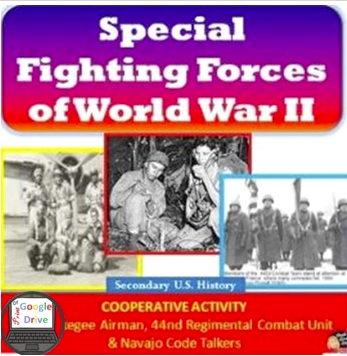Philosophical Chairs is an engaging teaching strategy to get students to think about their beliefs on important topics and to be able to discuss and share their ideas. It allows students to critically think, verbally ponder, and logically write their beliefs on a variety of ethical issues and topics.
Below are the steps to implement Philosophical Chairs in the classroom:
STEP 1: Create signs to hang in the classroom:
Totally Agree, Agree, Disagree, Totally Disagree. Hang one sign in each corner of the classroom.
STEP 2: First students need to learn about a specific topic. The teacher may wish to use direct instruction, show a film clip, or assign a reading, newspaper article, short story, etc.
STEP 3: The teacher will then present a statement or high-level question that may provoke thought and discussion. Some examples I use in my social studies classroom may include:
*
U.S. History: President Truman was justified in dropping the atomic bomb on Japan.
*
World History: After reading excerpts from
Leviathan by Hobbes. "People cannot be trusted to govern"
*
Civics: After reading "Civil Disobedience" by Henry David Thoreau, "The government is best which governs least".
STEP 4: Give students a few minutes to think about their opinion related to the question. You may have students write their opinion on a piece of paper.
STEP 5: Tell students to move to the corner of the room that has the sign that matches their opinion:
Totally Agree, Agree, Disagree, Totally Disagree. Tell students to they may be called upon to share their opinion with the class. You might want to have students discuss their opinions with the people they are standing next to so they can practice their response. Tell students they can also change their opinion at any time and move to a different corner of the room. * To simplify this strategy simply remove the
Totally Agree and Totally Disagree signs and have them move to either one side of the room or the other.
STEP 6: Ask volunteers to share their opinions. If no student volunteers, then call on students randomly to share their answers. You can use a simple rubric to assess their responses or give extra credit points.
STEP 7: At the end of this activity you may want to give your students a formative assessment. Some questions you may want to include:
1. What is your final opinion? Explain your reasoning in detail.
2. What were at least two opinions that are opposite of yours? What made you disagree with these opinions?
3. Are there still questions you may have about this topic?
STEP 8: Before beginning this activity you may want to review the following rules of engagement and post them on the board.
1. No talking while someone else is speaking.
2. Have an open mind and try to understand the person's point of view.
3. Explain your opinion and reasoning using academic language.
4. Respond to opinions only, not the personality of the person.
I would love to hear how you conduct this strategy in your classroom. Comment below!
Happy Teaching!















